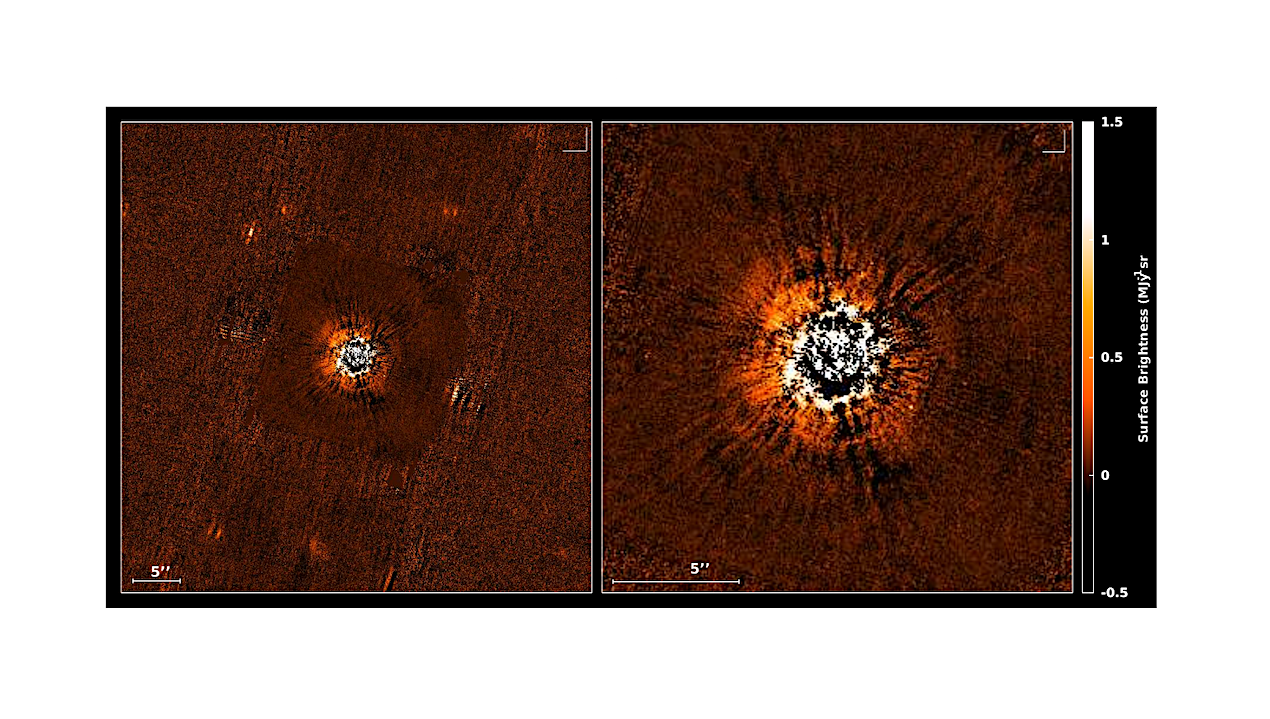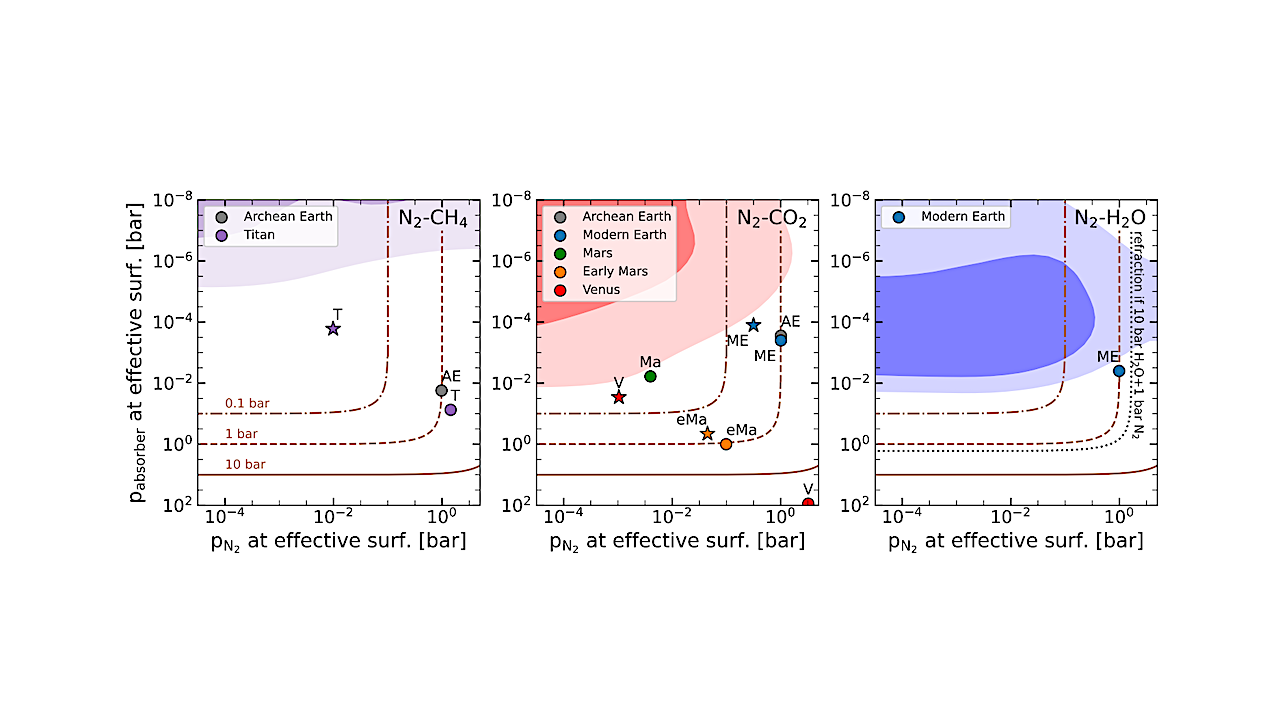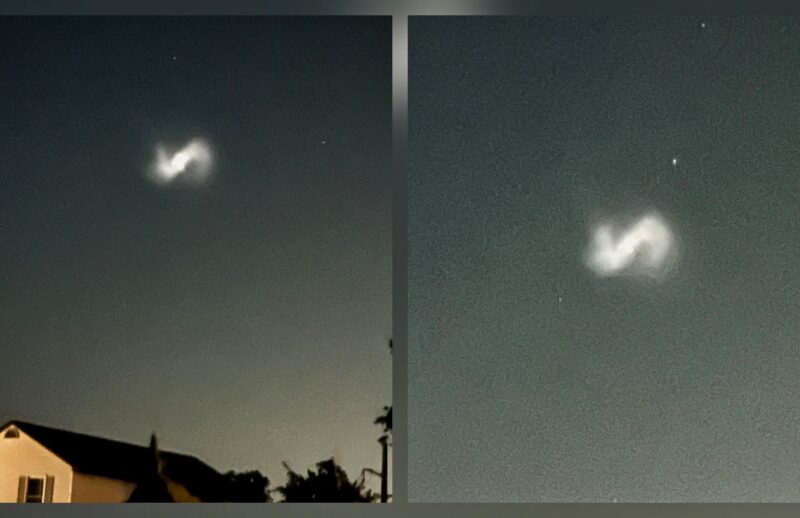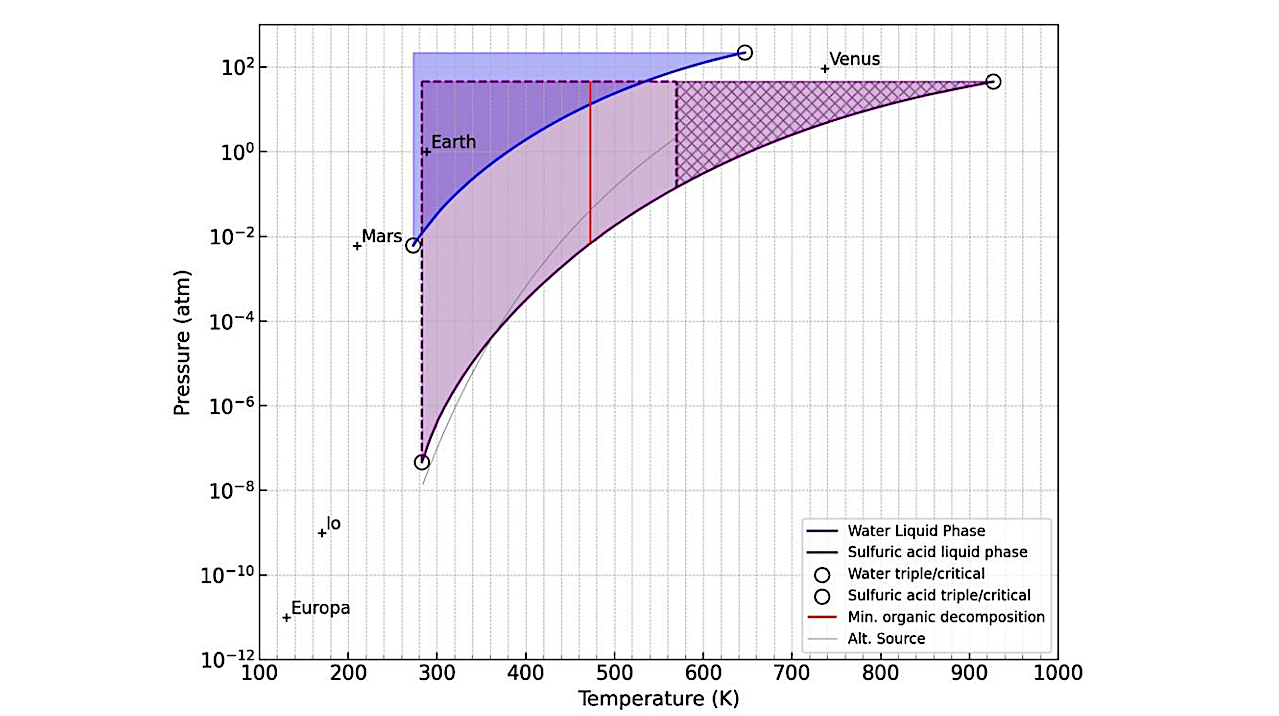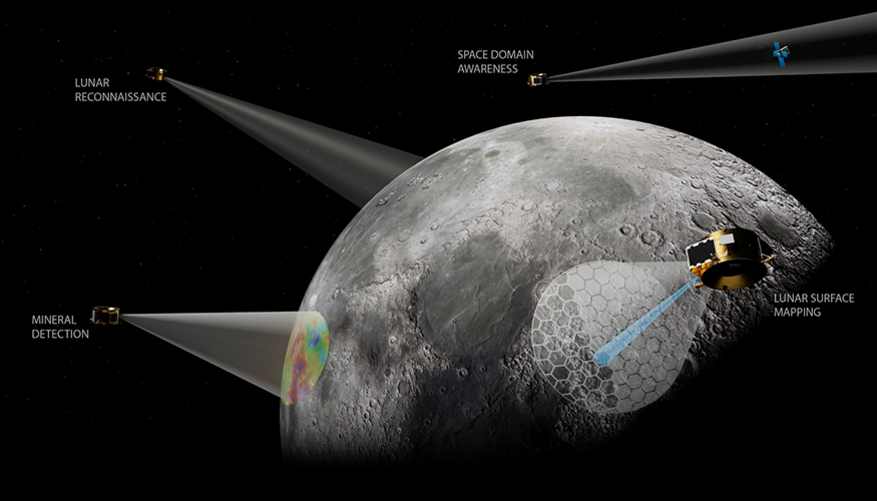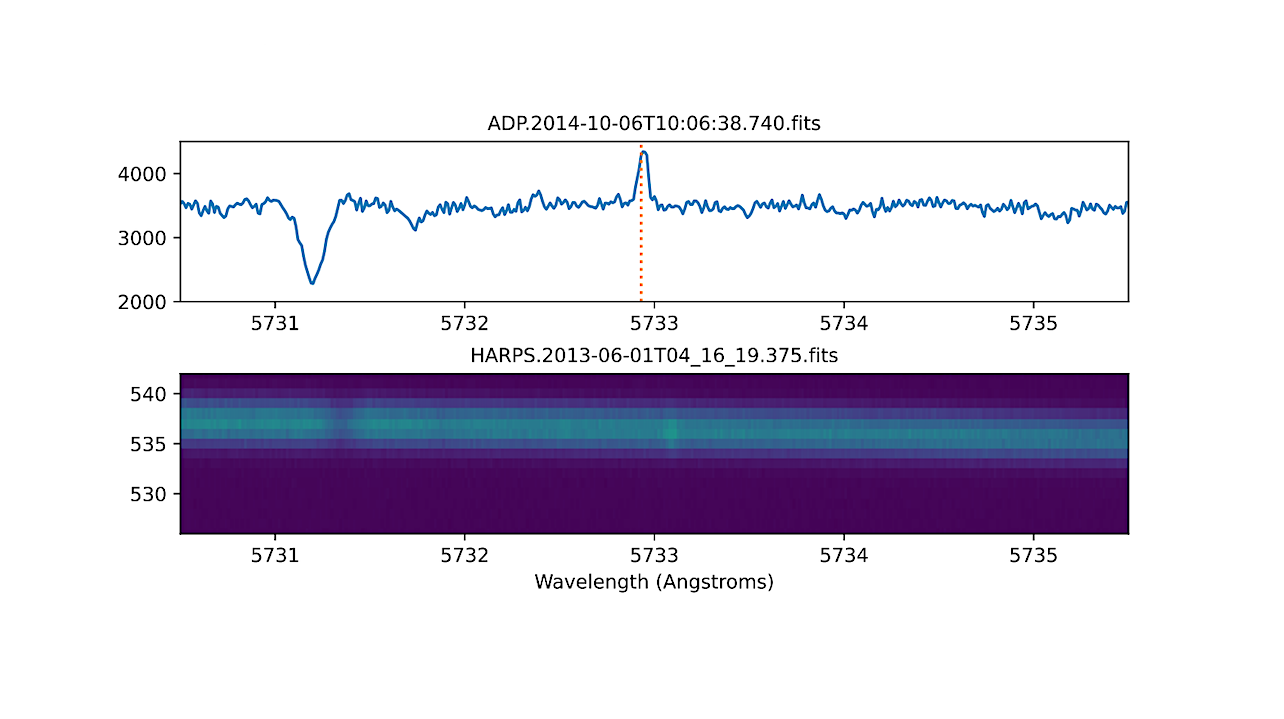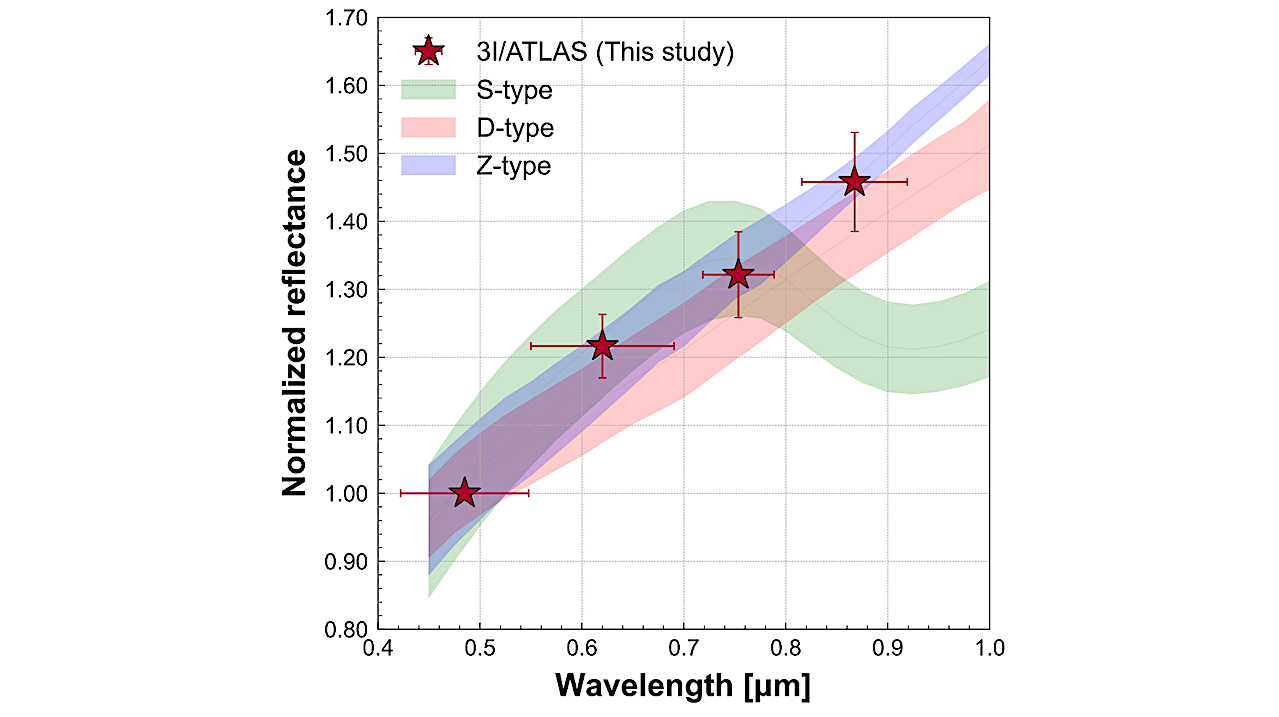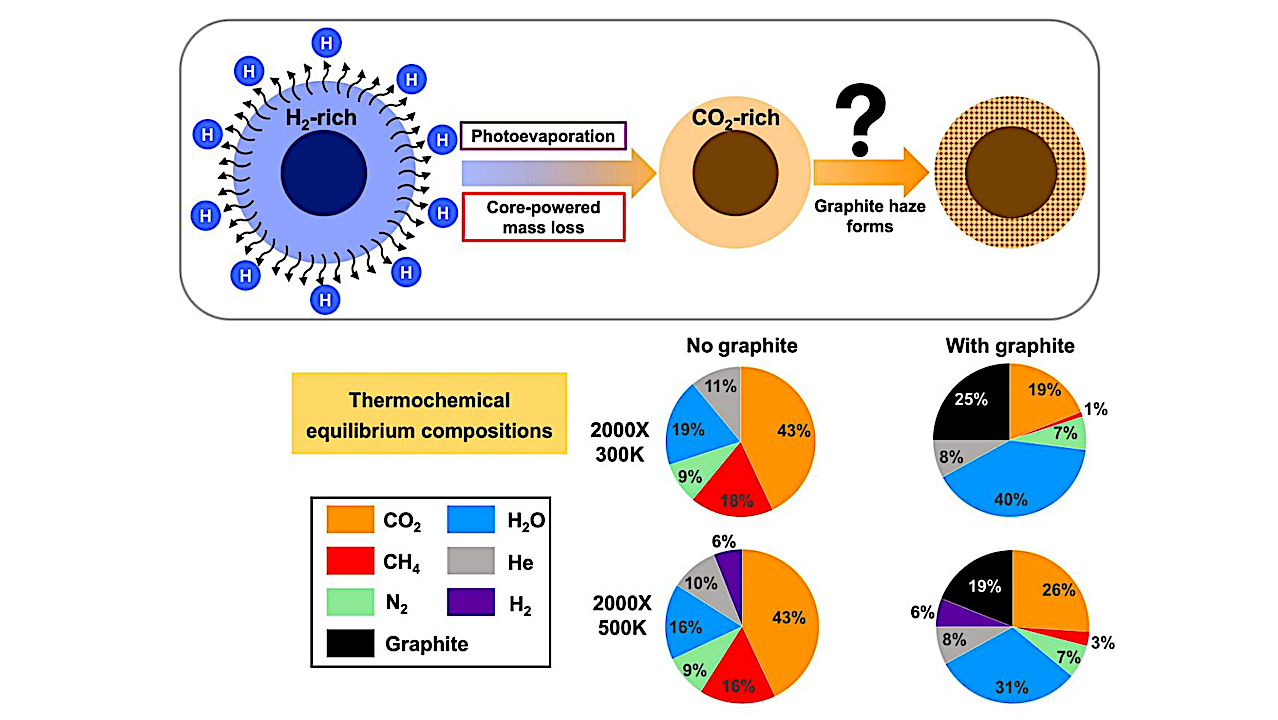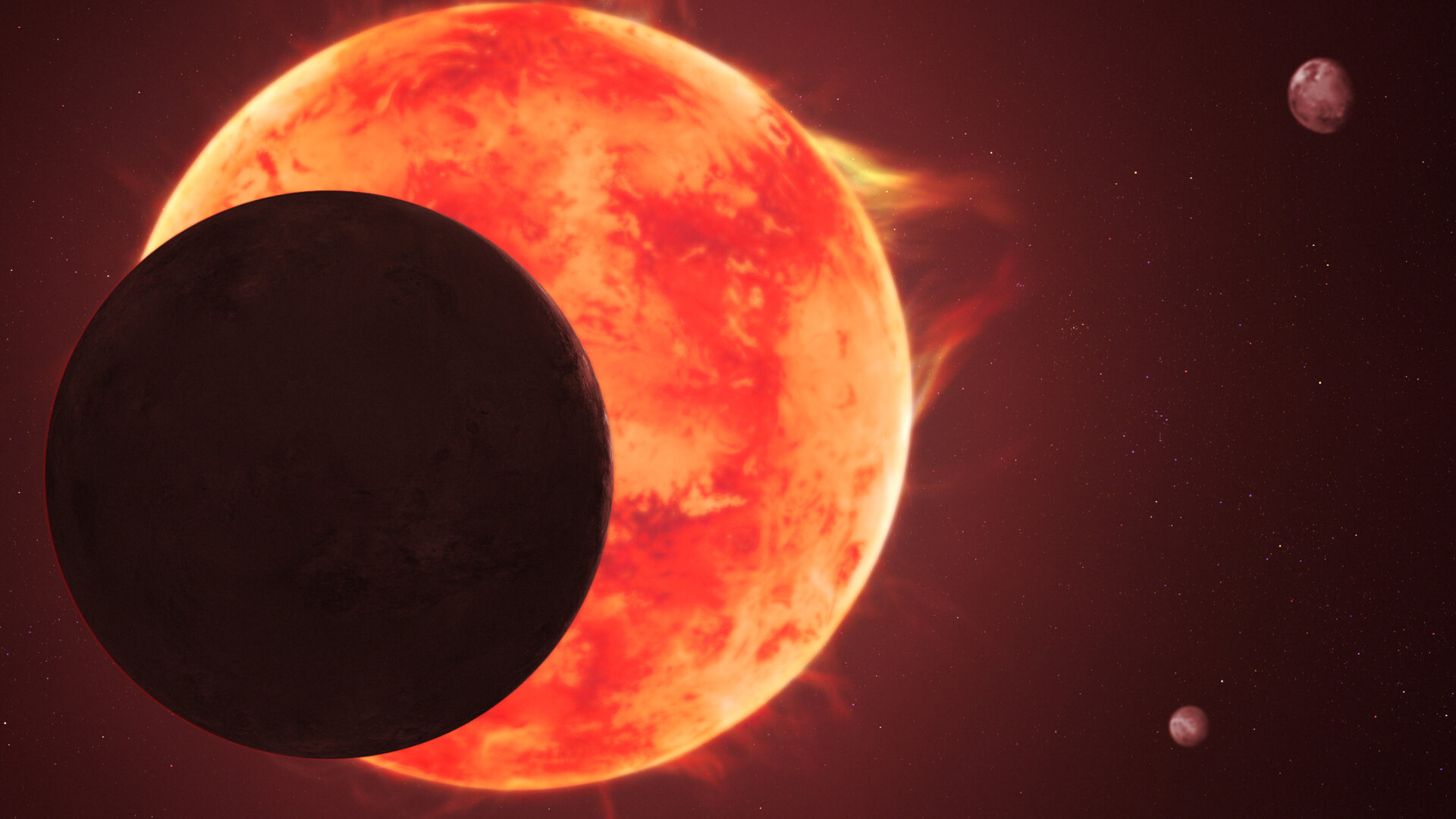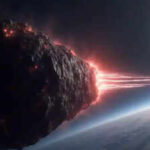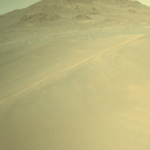The final F444W image produced via classical RDI optimized for extended source emission retrieval (FULL and Subarray combined), shown at a larger field of view to include the outer ring
Archive for August, 202570- Page
Joint posterior constraints on the surface partial pressure of key atmospheric absorbers for atmospheric scenarios similar to solar system terrestrials, with N2 as the background gas. The color shadings correspond
Watch more about the strange spiral in the night sky that many people saw while looking for Perseid meteors on August 12, 2025. EarthSky’s Deborah Byrd talks about the rocket
Sulfuric acid phase diagram. The pressure in atm (y-axis) vs. temperature in K (x-axis). The large purple shaded region represents the theoretical liquid-phase boundary for 98% w/w concentrated sulfuric acid
SALT LAKE CITY – It’s easy to talk about satellite autonomy but significant work remains to determine exactly which tasks should be handled by machines, according to speakers at the
Applications 13/08/2025 227 views 11 likes Combining 25 years of space-based data with ocean sampling, scientists have uncovered a change in the microscopic organisms that underpin the Southern Ocean’s food
Star: HD127423, Spectral Type:G0V, Observation Date/Time: 2013-06-01, 04:16:19.375. Top panel: reduced spectrum. Bottom panel: subsection of the corresponding CCD image for this wavelength range. — astro-ph.IM We examined archived observations
Reflectance spectrum of 3I/ATLAS. Also, Mahlke templates of S-, D- and Z-type asteroids are shown (Mahlke et al. 2022). Shaded areas indicate the standard deviations of the template spectra. —
The upper panel illustrates the mass loss processes and potential formation of graphite in sub-Neptune atmospheres within the graphitestability regime. The lower panel presents the atmospheric compositions calculated from the
Science & Exploration 13/08/2025 344 views 12 likes The exoplanet TRAPPIST-1 d intrigues astronomers looking for possibly habitable worlds beyond our solar system because it is similar in size to
-
 01From Polymerization-Enabled Folding and Assembly to Chemical Evolution: Key Processes for Emergence of Functional Polymers in the Origin of Life
01From Polymerization-Enabled Folding and Assembly to Chemical Evolution: Key Processes for Emergence of Functional Polymers in the Origin of Life -
 02Panasonic Leica Summilux DG 15mm f/1.7 ASPH review
02Panasonic Leica Summilux DG 15mm f/1.7 ASPH review -
 03How New NASA, India Earth Satellite NISAR Will See Earth
03How New NASA, India Earth Satellite NISAR Will See Earth -
 04And Thus Begins A New Year For Life On Earth
04And Thus Begins A New Year For Life On Earth -
 05Astronomy Activation Ambassadors: A New Era
05Astronomy Activation Ambassadors: A New Era -
06SpaceX launch surge helps set new global launch record in 2024
-
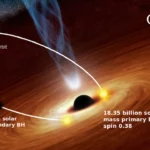 07Two Black Holes Observed Circling Each Other for the First Time
07Two Black Holes Observed Circling Each Other for the First Time


